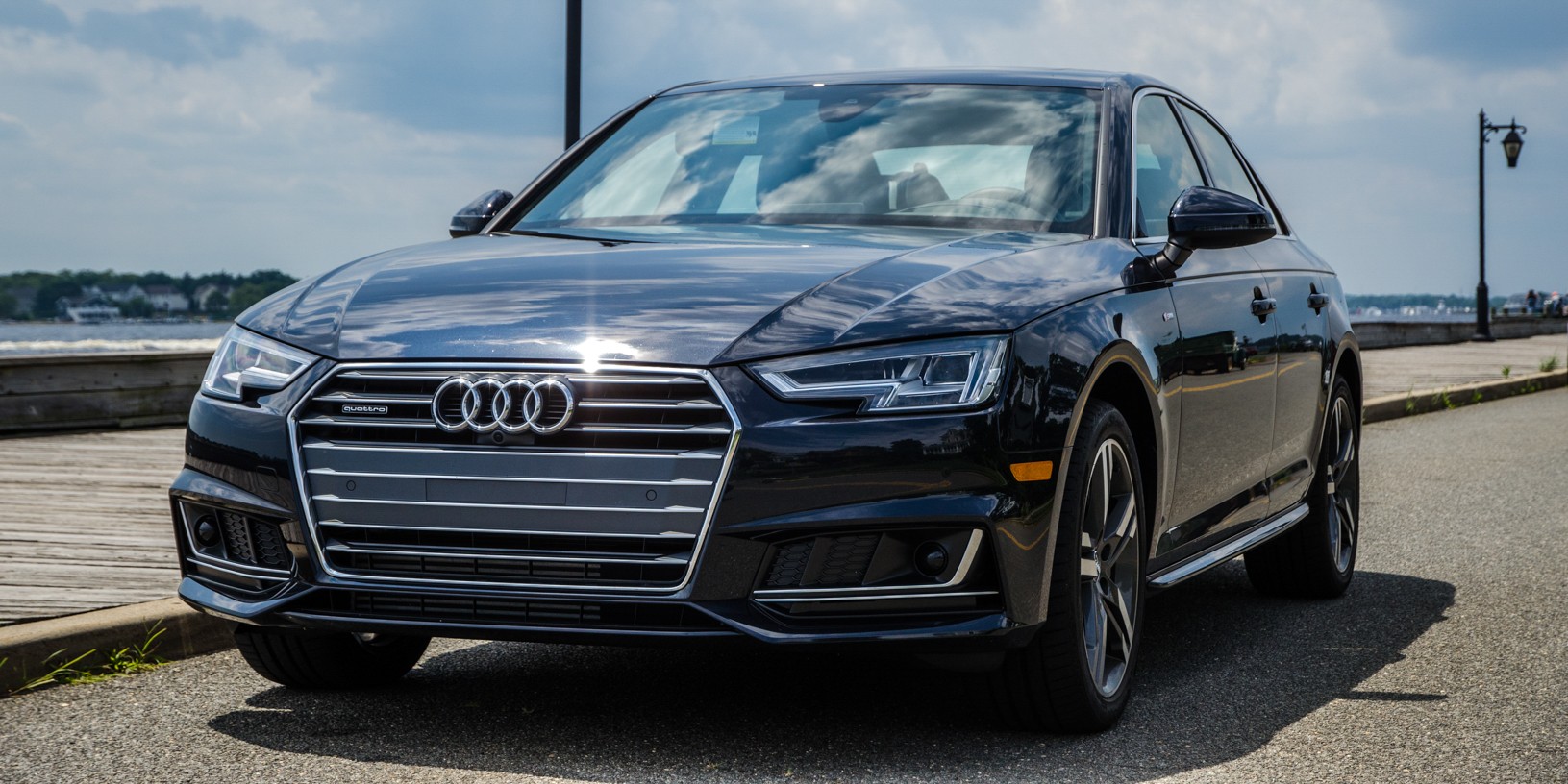Modern cars come with complex sensor networks and precise electronics, yet not all speedometers are created equal. Some manufacturers tune speedometers conservatively, often reading slightly higher than the actual speed to help drivers stay within legal limits.
However, a few models stand out for offering almost pinpoint speedometer accuracy, while others are off by as much as 8 MPH either overestimating or underestimating your speed. Here’s a look at both sides of the spectrum.
Cars With the Most Accurate Speedometers
Speedometers are one of those car features we take for granted—until they’re wrong. Whether you’re avoiding a speeding ticket or just trying to maintain fuel efficiency, having an accurate read on your speed matters more than most drivers realize. But not all speedometers are created equal.
ome inflate your speed by a few mph, while others nail it with near GPS-level precision. In this article, we’re diving into the cars that get it right—consistently and precisely. From German engineering to electric upstarts, these are the vehicles where what you see is what you’re actually doing on the road.
1. 2020 Honda Accord
The 2020 Honda Accord is not only a benchmark in midsize sedan quality, but it’s also known for its reliable and precise speedometer readings.
Testing by various automotive reviewers has shown the Accord’s digital and analog speed displays are within 1 MPH of actual GPS speed at highway speeds. Honda’s strong focus on sensor calibration and real-time ECU adjustments makes this possible.
Year after year, it stands out as the most impressive family sedan available, and the 2020 model continues that legacy without skipping a beat. With three available powertrains—including a hybrid—the Accord delivers a combination of power and efficiency that few rivals match.
The two gasoline-powered four-cylinder engines can be mated to either a responsive six-speed manual transmission or a smooth-shifting 10-speed automatic. Hallmarks of the Accord, such as graceful handling and a well-balanced chassis, remain intact across the entire lineup. Its lightly weighted yet accurate steering and composed ride quality are consistently excellent.
In addition, every trim level comes standard with a suite of driver-assist features, including automated emergency braking, lane-keeping assist, and adaptive cruise control. With top-tier driving dynamics and generous standard equipment, the 2020 Accord remains one of the most complete and recommendable sedans available.
For 2020, the Honda Accord carries over unchanged from the previous model year. After receiving a complete redesign in 2018, the car’s features and configurations have stayed consistent. While prices have increased slightly across the board, the range of standard and optional features remains the same.
Pricing for the 2020 Honda Accord begins at $25,265 and extends up to $37,395 depending on trim level and selected options. The trim breakdown includes the LX at $25,265, the Hybrid at $26,865, and the recommended Sport trim at $27,975.
From there, buyers can choose from the EX at $29,065 or $30,665, EX-L at $31,565 or $33,165, and the Touring, which comes in at either $36,435 or $37,395. It’s rare to find a family sedan that offers such enjoyable driving dynamics alongside the option of a six-speed manual transmission. That’s why we recommend the Sport trim with the manual.
The gearbox is genuinely fun to use, regardless of which engine it’s paired with. The Sport trim also enhances the package with features like 19-inch wheels, a 12-way power driver’s seat, and an infotainment system that includes Apple CarPlay and Android Auto integration.
For those wanting to compare the 2020 Honda Accord against other cars, our updated comparison tool allows you to evaluate up to five vehicles side by side for a complete breakdown of features and specifications.
Under the hood, the Accord lineup begins with a 192-hp, turbocharged 1.5-liter four-cylinder engine. However, the standout performer is the 252-hp, turbocharged 2.0-liter four-cylinder that sits at the top of the range.
This engine can be paired with either the aforementioned manual or the refined 10-speed automatic, which delivers nearly seamless shifts. Both engines are impressively smooth, but the 2.0-liter offers a more exhilarating experience, easily spinning the front wheels in first gear.
For those interested in maximizing efficiency, the hybrid version combines a gasoline engine with two electric motors to create a balanced, fuel-efficient setup. The chassis, meanwhile, encourages spirited driving, with limited body roll and good road composure through corners.
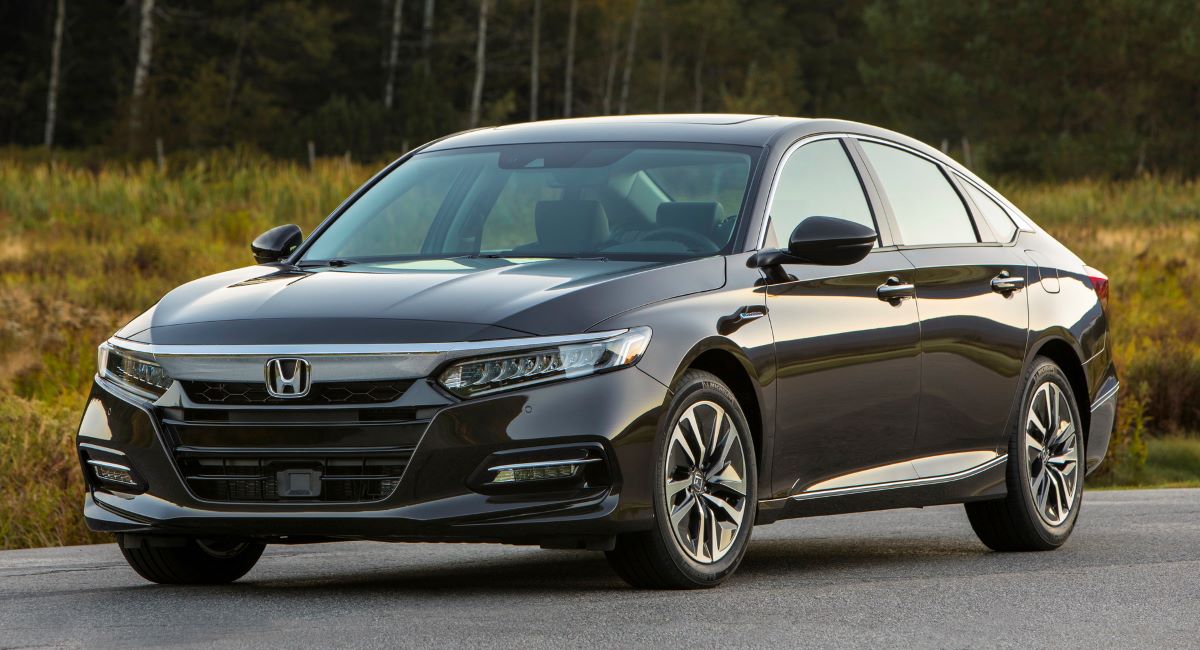
While the steering is appropriately light for a midsize sedan, we wouldn’t mind a little more road feedback. Nevertheless, its precision and predictability make it a strong performer. Ride quality is firm but never punishing, offering the best of both worlds: sport-sedan-like dynamics with daily-driver comfort.
Honda has done away with the old naturally aspirated engines and V-6s in favor of smaller, turbocharged four-cylinders, and the move has largely paid off in terms of fuel economy.
In our real-world highway testing, the Accord Touring 2.0T with the 10-speed automatic exceeded its EPA highway rating, delivering 35 mpg. That’s significantly better than the 29 mpg we recorded with a 2018 Toyota Camry equipped with a 301-hp V-6. The Accord Sport 1.5T, when paired with the manual transmission, fared even better, reaching 38 mpg.
Inside, the Accord offers a surprisingly spacious and comfortable cabin, especially for rear-seat passengers who will find more legroom than in nearly any other midsize sedan. Honda’s no-options trim strategy means that buyers don’t have to wade through an overwhelming list of packages; each trim comes well-equipped with thoughtfully selected features.
Even the base models offer attractive interiors with quality materials, while higher trims like the Touring come fully loaded with luxuries such as ventilated and heated front seats, heated rear seats, and a head-up display. The cloth upholstery in lower trims is well-executed, providing comfort and visual appeal.
Cargo capacity is another strong point—at 17 cubic feet, the Accord tops its class. Notably, the hybrid version doesn’t sacrifice any trunk space due to its battery placement. In our tests, the regular Accord fit two more carry-on bags with the rear seats folded than its closest competitor.
While interior storage space is about average, its design lacks the cleverness of the Honda Civic or Hyundai Ioniq, but it remains sufficient for most drivers’ everyday needs.
All 2020 Accord models come standard with a touchscreen infotainment system, available in either 7.0- or 8.0-inch formats. Bluetooth and USB connectivity are standard, but to access Apple CarPlay and Android Auto, you’ll need the 8.0-inch touchscreen system.
The interface is snappy, attractive, and intuitive enough for even non-tech-savvy users. For those seeking better sound quality, Honda includes a 10-speaker, 450-watt premium audio system on the EX-L trim, while other models offer either a four- or eight-speaker setup.
Safety is a key strength for the 2020 Accord, which has earned a five-star rating from the National Highway Traffic Safety Administration and has been recognized as a Top Safety Pick by the Insurance Institute for Highway Safety.
A comprehensive suite of driver-assistance features comes standard on all models, including automated emergency braking, lane-keeping assist, and adaptive cruise control. However, not every piece of safety technology is included in the base models.
Features like blind-spot monitoring, rear cross-traffic alert, and parking sensors still require an upgrade to higher trims or added cost. The most notable standard safety features are: standard automated emergency braking, standard lane-keeping assist, and standard adaptive cruise control.
When it comes to warranty and maintenance, Honda’s coverage is solid but unexceptional. While it’s in line with industry norms, it falls short compared to the superior coverage offered by Hyundai. Additionally, rivals like the Chevrolet Malibu and Toyota Camry go a step further by offering complimentary scheduled maintenance, which Honda does not.
The Accord’s limited warranty covers three years or 36,000 miles, and the powertrain warranty extends to five years or 60,000 miles. However, Honda does not provide any form of complimentary scheduled maintenance.
2. 2019 BMW 3 Series (G20)
BMW engineers take pride in mechanical and electronic precision, and the 2019 3 Series is no exception.
The digital speedometer in this model closely matches GPS-based speed, often within 0.5 MPH. Drivers and reviewers alike have noted the consistency of its readout across a range of driving conditions.
Part of this accuracy stems from BMW’s use of high-resolution wheel speed sensors and real-time GPS synchronization. The legendary BMW 3-series has long stood as the standard-bearer for sports sedans, a role it confidently reclaims with its latest iteration.
While the previous generation fell short of expectations in some areas, the newest model restores the 3-series to its rightful place as a leader in driving satisfaction. This redesigned version is physically larger than its predecessor, but through strategic use of lightweight materials, it actually weighs less.
Its front end is now more pronounced, giving it a stronger visual identity, while other design elements—like the signature Hofmeister kink—have been subtly refined rather than overhauled, preserving the classic BMW styling cues.
Under the hood, the 3-series continues to impress with two refined and capable gas-powered engines. The 330i comes equipped with a turbocharged 2.0-liter four-cylinder that produces 255 horsepower and 295 lb-ft of torque, delivering strong performance in a compact, efficient package.
For those seeking more power, the M340i features a turbocharged 3.0-liter inline-six engine that churns out 385 horsepower and 369 lb-ft of torque, offering exhilarating acceleration and robust mid-range pull. Both powertrains are mated to an eight-speed automatic transmission and come with standard rear-wheel drive, with all-wheel drive available as an option.
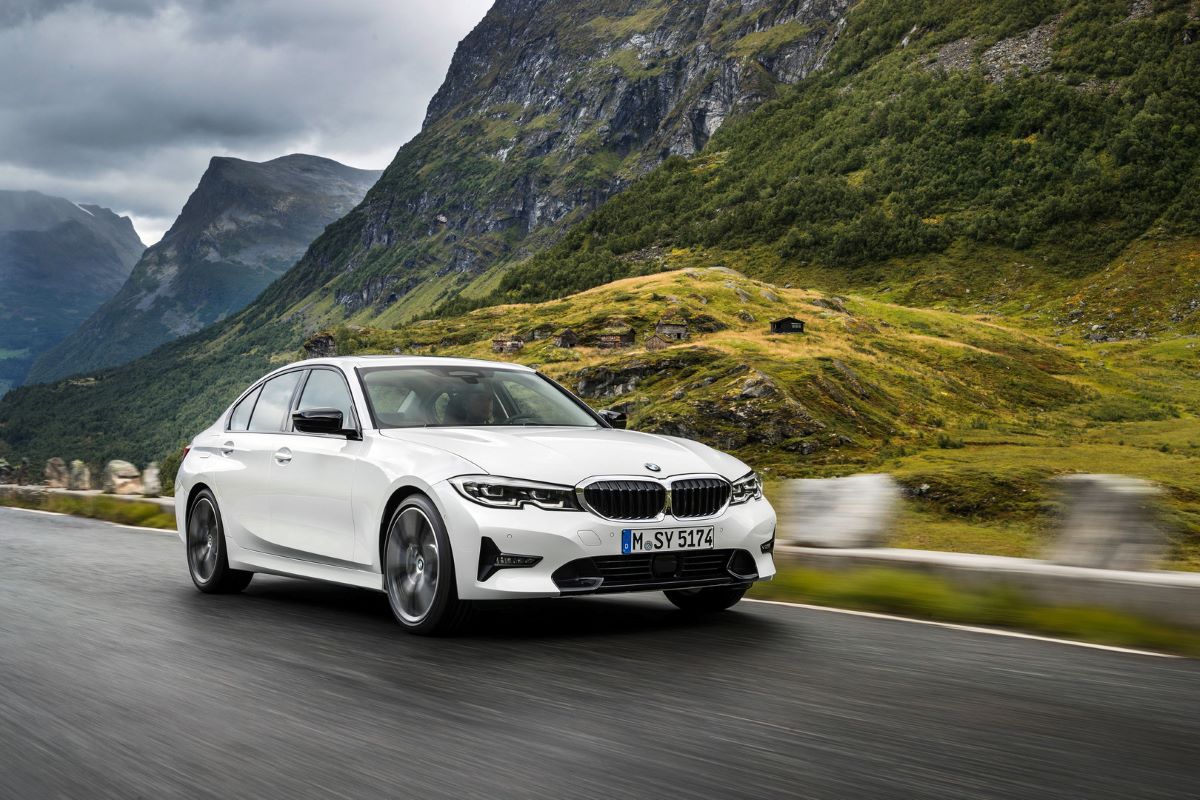
Regrettably, BMW no longer offers a manual transmission with the 3-series—a move that may disappoint driving purists. “Sorry, purists.” A hybrid variant, the 330e, will also be added to the lineup, appealing to those seeking greater efficiency without compromising on performance.
Structurally, the latest 3-series benefits from a stiffer platform and offers two suspension options: a standard setup and one with adaptive dampers. During our initial drive, the revitalized driving dynamics were immediately apparent.
The improved steering feel, now more communicative and responsive, allowed drivers to sense road-surface textures and offered variable effort depending on speed and conditions. This return to form marked a clear shift toward the brand’s roots in driver engagement.
Inside, the cabin of the 3-series has been thoroughly updated, featuring a contemporary layout, high-quality materials, and a fit and finish that matches its premium aspirations. BMW asserts that visibility from within the cabin has been improved, while interior noise levels have been reduced compared to the previous model.
The trunk has also grown in size and can now be operated hands-free, enhancing the car’s day-to-day practicality. The infotainment system is thoughtfully designed with user-friendly controls and offers an optional 12.3-inch touchscreen display. For those looking to elevate the experience further, BMW provides a host of premium optional features.
These include a richly detailed head-up display, a fully digital instrument cluster, customizable ambient lighting throughout the cabin, and a suite of advanced driver-assistance systems.
Among the standout high-tech options are adaptive LED headlights that respond to changes in the road and an adaptive cruise control system with stop-and-go capability, designed to make long drives and heavy traffic more manageable.
3. 2021 Mazda3
Mazda’s commitment to driver experience extends even to speedometer calibration. In the 2021 Mazda3, the digital cluster is among the most accurate in its class.
Independent tests show the car deviates less than 1 MPH from actual road speed, ensuring peace of mind during highway driving. This accuracy also benefits adaptive cruise control and other active safety features.
For the 2021 model year, two newly available engines take center stage in the list of updates for the Mazda3. Mazda has brought back the naturally aspirated 2.0-liter four-cylinder engine that was featured in the previous generation of the Mazda3.
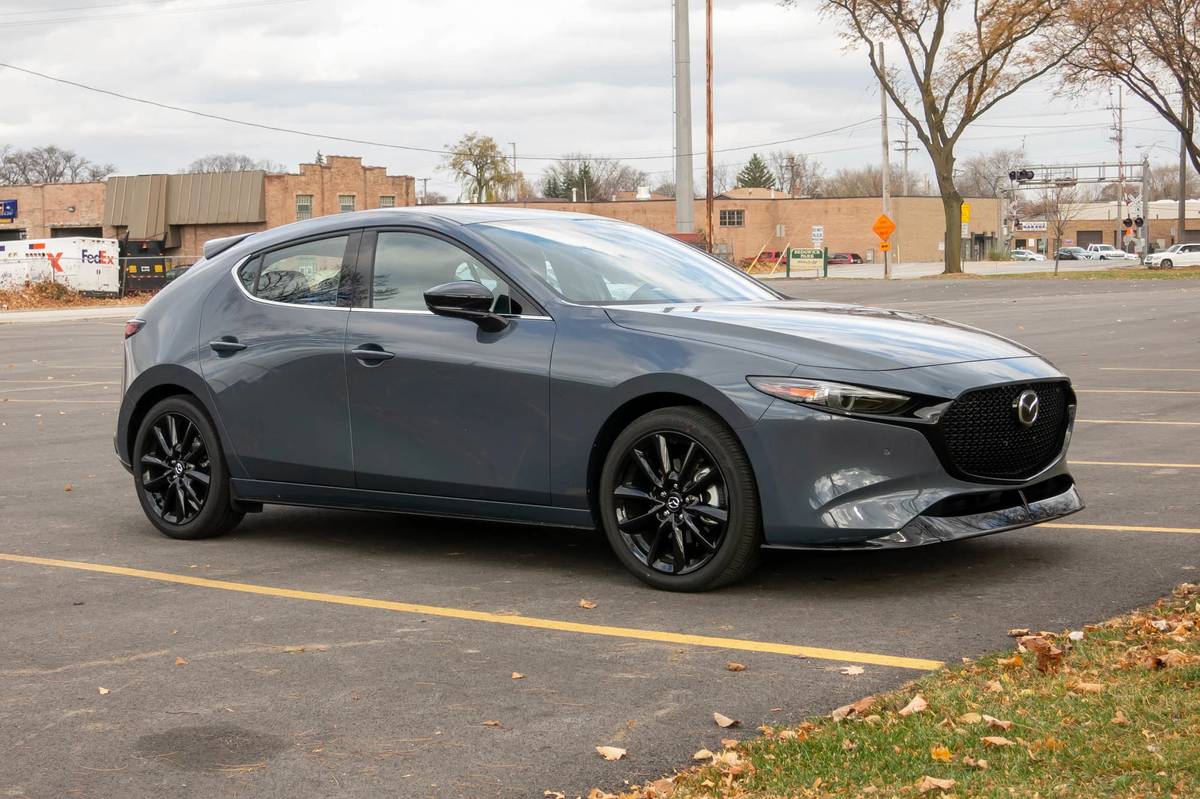
This engine maintains its original output, producing 155 horsepower and 150 lb-ft of torque. It’s paired exclusively with a six-speed automatic transmission and is available only with front-wheel drive.
Meanwhile, the more widely used powertrain option remains the carryover 2.5-liter four-cylinder engine. This engine continues to deliver 186 horsepower and 186 lb-ft of torque and is offered with either front-wheel drive or all-wheel drive, providing a bit more flexibility depending on your preferences. In most configurations, this engine is mated to a six-speed automatic transmission.
4. 2020 Tesla Model 3
Since Tesla relies heavily on digital systems and OTA (over-the-air) updates, the Model 3’s software-driven speedometer is very precise.
Real-world comparisons between Tesla’s readout and GPS apps often yield discrepancies of no more than 0.5 to 1 MPH. Tesla’s system continuously adapts to changes in tire wear and pressure, which helps maintain accuracy over time.
Like most electric vehicles, the Model 3 accelerates with seamless ease and near silence, thanks to its electric motor delivering immediate power right off the line. In our testing, the rear-wheel-drive Long Range version accelerated from zero to 60 mph in just 5.1 seconds.

The Performance variant of the Model 3 delivers even quicker results, launching to 60 mph in a blistering 3.5 seconds—making it 0.4 second faster than the larger and pricier Model S 100D. True to Tesla’s design, the Model 3’s battery is mounted beneath the floor, which contributes to its low center of gravity.
This setup enhances agility, allowing the car to change direction with precision and stay firmly planted through corners. Steering is responsive and well-balanced, and Tesla offers three settings that let drivers adjust the steering effort to their preference.
The suspension delivers a firm ride that never crosses into uncomfortable territory; however, in the absence of a combustion engine’s masking hum, road noise becomes more apparent, with tire impacts and vibrations over imperfect surfaces quite noticeable inside the cabin.
5. 2018 Audi A4
Audi’s Virtual Cockpit in the 2018 A4 offers an advanced digital display that reads speed with remarkable accuracy.
This model uses advanced sensor fusion integrating GPS, ABS wheel sensors, and torque data to provide a consistent and reliable speed indication. It usually reads within 1 MPH of GPS-verified speeds, even at high velocities.
The 2018 Audi A4 stands out as one of the most well-balanced offerings in the entry-level luxury sedan market, blending athletic performance with a refined, thoughtfully constructed interior, an array of modern technologies, and a sleek, attractive exterior design.
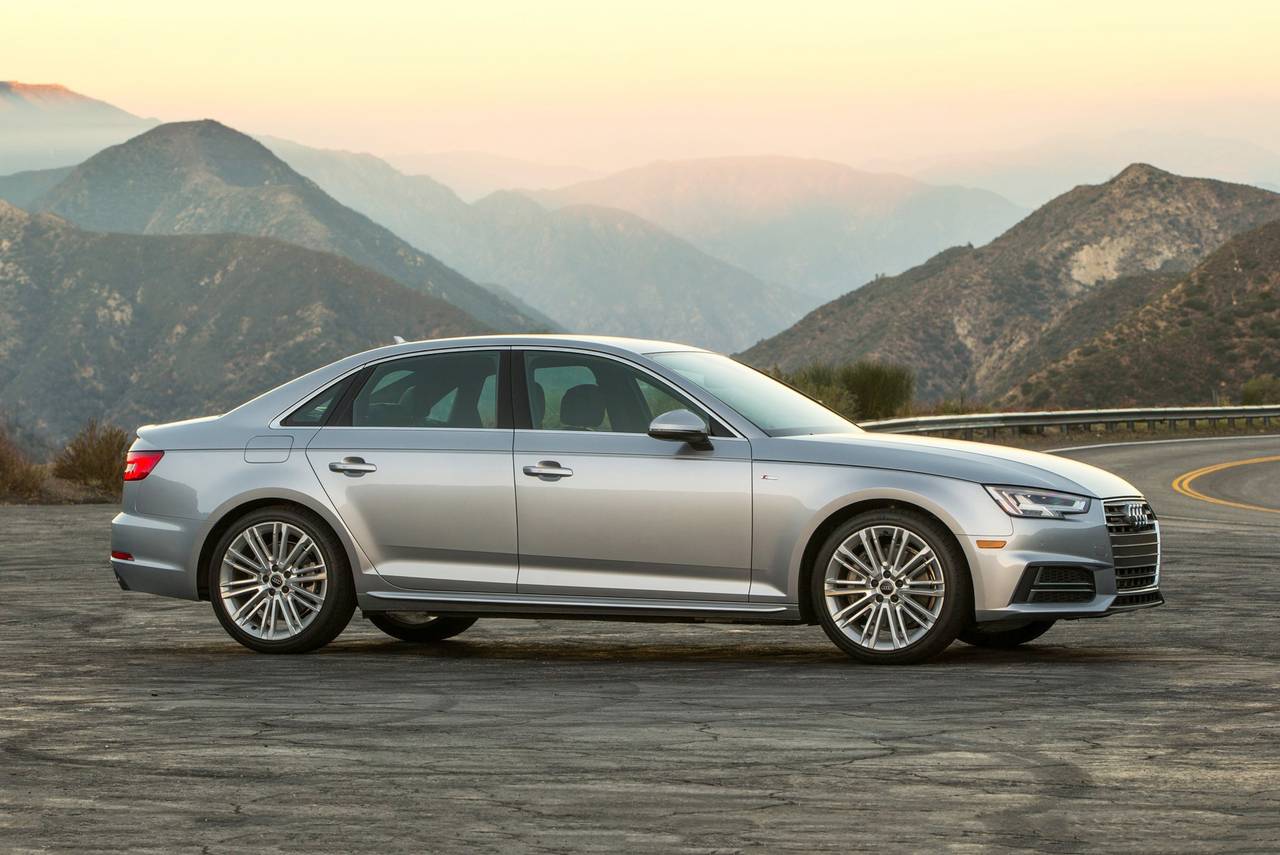
In testing, it consistently impresses across the board—accelerating more quickly than many of its competitors while maintaining commendable fuel efficiency, all while enveloping passengers in a cabin that is spacious, quiet, and richly appointed.
The suspension setup expertly straddles the line between sporty and comfortable, delivering confident handling when driven aggressively and a smooth, laid-back ride during longer trips.
Complementing these strengths is a suite of advanced features, including an optional digital instrument cluster, built-in Wi-Fi, and sophisticated active safety systems. Taken together, these attributes make the A4 a standout that ranks near the top of its segment.
Cars With Speedometers Off by 8 MPH
You think you’re doing 65—but your car says 73. That’s not just annoying, it could be dangerous or costly. Speedometers are supposed to be a driver’s trusted reference point, but some cars are off by as much as 8 MPH right off the lot.
That’s not a fluke—it’s more common than you’d expect, and in some cases, even intentional due to legal regulations and manufacturer calibration choices. In this article, we’re calling out the worst offenders: the cars with speedometers so far off the mark, you might want to double-check with a GPS before trusting your dashboard.
1. 2016 Jeep Renegade
The quirky Renegade is a fun urban crossover, but its speedometer is one of the least accurate among modern vehicles.

Reports from owners and tests using GPS devices have found it to be off by as much as 8 MPH especially at higher speeds, where it tends to overstate the vehicle’s pace.
This exaggerated reading may be intentional to encourage cautious driving but can be misleading. The standard engine in the Renegade Sport and Latitude trims is a 1.4-liter turbocharged inline-four that generates 160 horsepower and 184 lb-ft of torque.
Paired with a six-speed manual transmission, this powertrain achieves fuel economy ratings of 24 mpg in the city and 31 mpg on the highway, regardless of whether it’s configured with two-wheel drive or four-wheel drive. For the Limited and Trailhawk trims, Jeep equips the Renegade with a 2.4-liter inline-four engine that produces 180 horsepower and 175 lb-ft of torque.
This engine comes exclusively with a nine-speed automatic transmission, delivering 22/30 mpg with two-wheel drive and 21/29 mpg when equipped with four-wheel drive. The 2017 Jeep Renegade is offered solely as a four-door compact SUV.
For drivers seeking serious off-road capability, the Renegade Trailhawk is the go-to model, thanks to its highly competent four-wheel-drive system.
2. 2015 Chevrolet Cruze
The first-generation Cruze, while dependable in other respects, struggles with speedometer precision.
Drivers have reported discrepancies ranging from 6 to 8 MPH over actual speed, particularly after tire changes or wear. The analog display is slow to update in real time, contributing to its inaccuracy during acceleration or deceleration.
The 2015 Chevrolet Cruze ranks in the top third of the compact car class due to its smooth and balanced ride, a high-quality and upscale interior, user-friendly technology features, and a spacious trunk in non-diesel models.
Among its most notable strengths are its composed handling, impressive fuel efficiency from the available engines, and generous cargo capacity—again, especially for gasoline-powered variants. However, the back seat is notably cramped, which may be a drawback for passengers needing more legroom.

For 2015, Chevrolet introduced refreshed exterior styling for all trims except the base model. Additionally, new tech options were added, including an available Wi-Fi hot spot and Siri Eyes Free integration.
The Cruze seats five passengers and offers front-wheel drive across the lineup. It delivers city fuel economy ranging from 22 to 28 mpg and highway mileage between 35 and 46 mpg.
The engine lineup produces between 138 and 151 horsepower, depending on the configuration. These updates and features help the 2015 Cruze maintain a competitive position in the compact sedan segment.
3. 2014 Ford Fiesta
Ford’s compact Fiesta is a nimble city car, but its analog speedometer frequently reads high. GPS-based comparisons have shown discrepancies as wide as 8 MPH at 60-70 MPH.
The issue appears to stem from basic sensor calibration and simplified software algorithms that don’t adjust well for tire wear or pressure changes.
Powering the front-wheel-drive Ford Fiesta is a 120-horsepower four-cylinder engine that performs well in stop-and-go traffic. However, its lack of power becomes apparent when climbing hills or accelerating on the highway. A five-speed manual transmission comes standard, and buyers can opt for a six-speed automatic if preferred.
For those looking for more spirited performance, the Ford Fiesta ST steps things up. This performance-focused version is equipped with a turbocharged four-cylinder engine that produces 197 horsepower, giving it the punch needed for swift highway passing. It’s paired exclusively with a six-speed manual transmission.
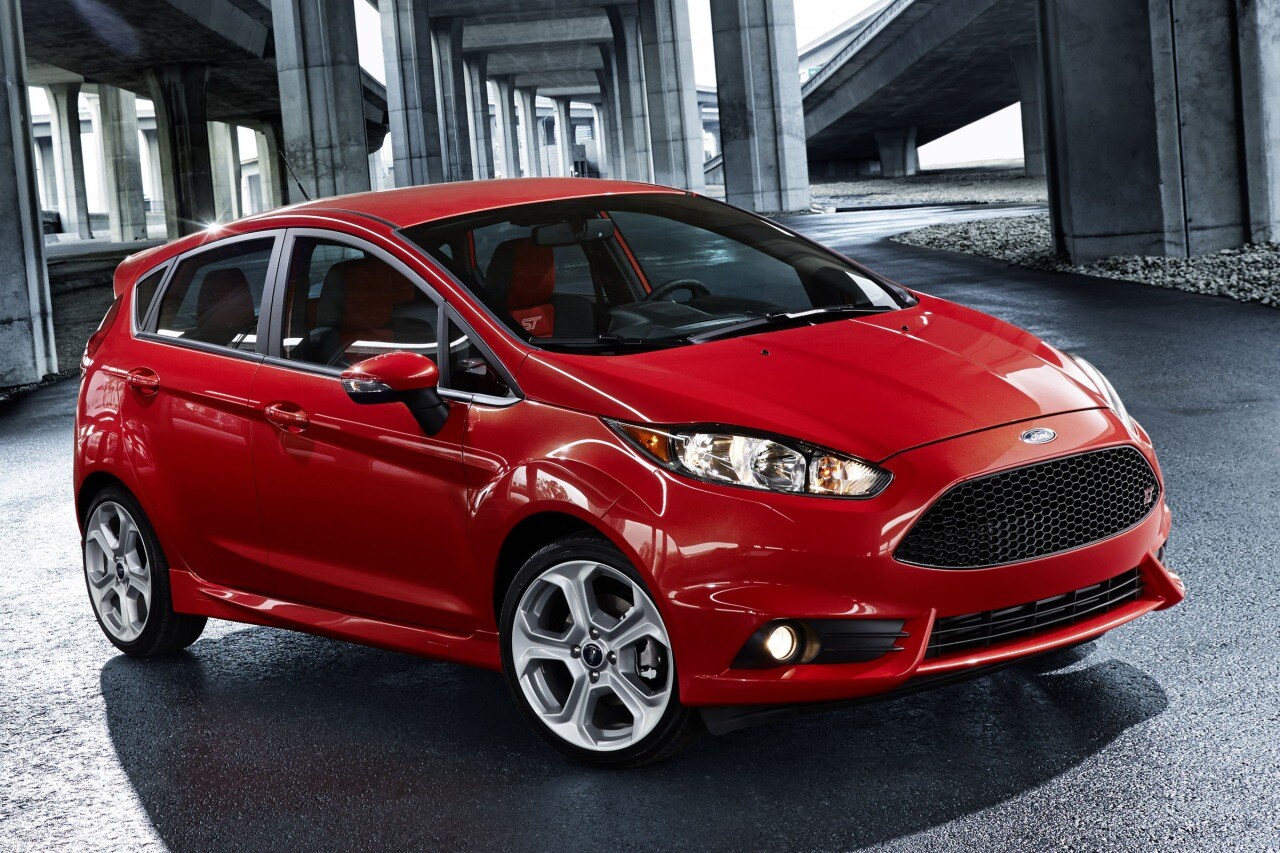
The base model of the Ford Fiesta, when equipped with the automatic transmission, achieves an EPA-estimated 27 mpg in the city and 36 mpg on the highway—figures that are on par with other subcompact cars.
Arguably, the standout feature of the Fiesta is its outstanding handling. The car delivers sharp steering response and remains composed through tight corners, offering an engaging driving experience. While the suspension leans toward the firmer side, it still manages to provide a reasonably comfortable ride over rough pavement.
Inside, the Ford Fiesta impresses with stylish design elements and high-quality materials, setting it apart as one of the more visually appealing interiors in its class. The car accommodates up to five occupants, and the front seats are both comfortable and supportive.
4. 2013 Nissan Altima
Although the Altima offers a smooth ride, its speedometer often reads 7 to 8 MPH higher than actual speeds particularly in models with 17- or 18-inch wheels.
This overstatement isn’t just annoying; it could lead to confusion when using radar cruise control or trying to time speed-limited maneuvers precisely.
The 2013 Nissan Altima 2.5 Sedan starts at a base price of $21,760. Measuring 191.5 inches in length, 72.0 inches in width, and 57.9 inches in height, the Altima offers seating for five passengers.
It has a cargo capacity of 15.4 cubic feet. The front headroom comes in at 40.0 inches, while the rear headroom is 37.1 inches. Front legroom stretches to 45.0 inches, with 36.1 inches available in the rear. Both the front and rear shoulder room measure 56.4 inches. The vehicle has a curb weight of 3108 pounds.
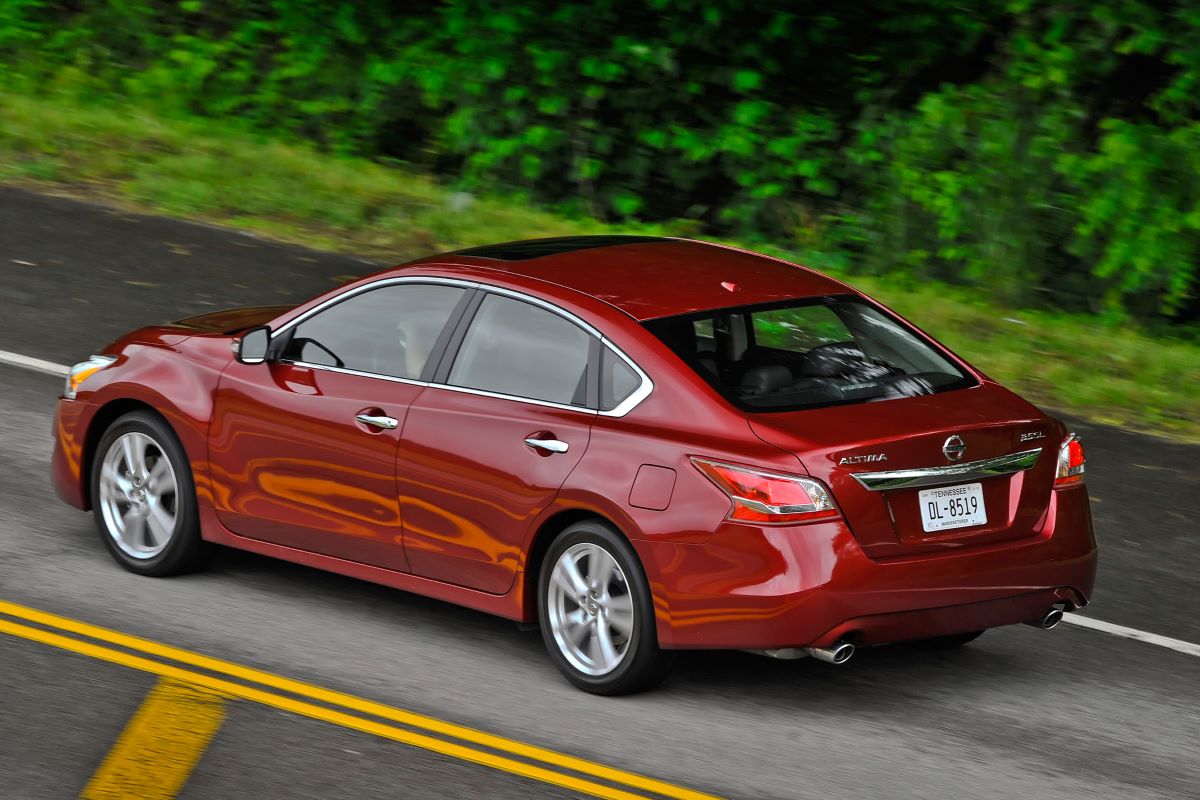
Under the hood, the Altima is equipped with a 2.5-liter inline four-cylinder engine that produces 182 horsepower at 6000 rpm and 180 lb-ft of torque at 4000 rpm.
The engine runs on unleaded fuel and is paired with Nissan’s Xtronic Continuously Variable Transmission (CVT), classified as an automatic transmission. The car uses a front-wheel-drive (FWD) drivetrain and has a cylinder configuration arranged in-line with a total of four cylinders.
The standard fuel economy is rated at 27 mpg in the city and 38 mpg on the highway, providing a driving range of approximately 558 miles.
While data such as wheelbase, engine size, ground clearance, gross vehicle weight rating (GVWR), and payload capacity are not available, the Altima still offers a solid blend of efficiency, practicality, and performance within the midsize sedan category. Towing capacity is also not listed for this trim.
5. 2017 Dodge Grand Caravan
The aging platform of the Grand Caravan is evident in many ways including its outdated analog speedometer system.
Owners have frequently noted readings as much as 8 MPH higher than GPS-confirmed speed, especially under load or on highways. The lack of adaptive calibration means that tire changes, inflation differences, or wear can worsen the error.
While most modern cars offer relatively accurate speed readings, there’s still a noticeable gap between the best and worst performers. Accurate speedometers, like those in the BMW 3 Series or Tesla Model 3, enhance safety, performance tracking, and fuel efficiency.
The Dodge Grand Caravan has been on the market for several years, and while it doesn’t showcase the latest in in-car or drivetrain technology, it stands out as a practical and feature-rich minivan.
One of its biggest selling points is a price tag that undercuts most competitors, making it a sensible choice for many buyers. For 2017, the main updates include a streamlined trim lineup and increased base-level specifications.
Inside, the Grand Caravan doesn’t immediately give away its age. While the interior materials and dashboard plastics don’t quite rival those of more modern competitors, they’re more than adequate for the vehicle’s price point.
Upon closer examination, some buttons and dashboard controls feel cheap, and the glovebox lid comes off as a bit flimsy. The standard 6.5-inch touchscreen also feels outdated, but standard equipment is generous, even on the base trims.
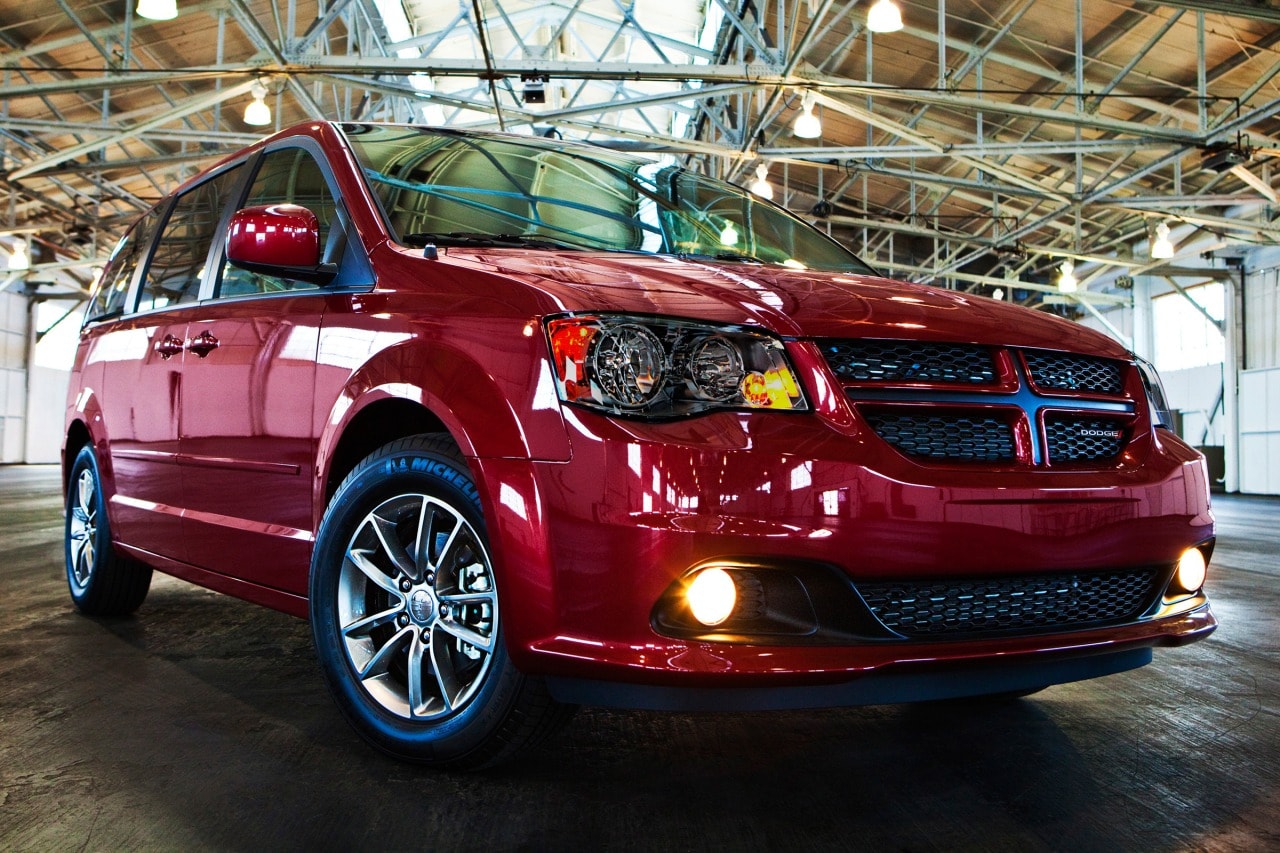
The Grand Caravan’s age shows more when it comes to ride and handling. The 3.6-liter V6 engine, which produces 283 horsepower and 260 lb-ft of torque, can get loud under hard acceleration.
The suspension doesn’t smooth out road imperfections as well as newer rivals, and the handling feels dated, though this is less of a concern in the minivan segment. The power is sent to the front wheels via a 6-speed automatic transmission.
While the transmission isn’t as refined as more modern ones, it performs well in typical driving scenarios, staying mostly unobtrusive. Acceleration and fuel economy are average for the class, which is impressive given the vehicle’s age and value-driven pricing.
When it comes to options, the Grand Caravan is available in four trim levels and offers a wide range of standard features. The base SE trim includes three-zone air conditioning, a rearview camera, a 6-speaker audio system with an auxiliary input, and a 6.5-inch touchscreen.
Depending on the trim, additional options include the Uconnect Hands-free Group Package, which adds a USB port, satellite radio, and Bluetooth audio—standard on all but the SE, where it’s optional.
The SE Plus trim upgrades to 17-inch wheels, a front floor console, second-row captain’s chairs, and enhanced upholstery. Moving up to the SXT adds foglights, a power liftgate, a larger floor console, a suede and leather upholstery combination, an 8-way power driver’s seat, and power-operated rear sliding doors.
The SXT also offers the Driver Convenience Group package, which includes a large overhead console, heated front and second-row seats, and voice command capability.
In conclusion, the Dodge Grand Caravan may be showing its age in terms of safety technology and overall refinement, but it continues to deliver strong value. With a robust list of standard features, useful configurations, and a budget-friendly price, it remains a practical choice for families in need of an affordable and capable people carrier.
On the other hand, vehicles with exaggerated readings may cause drivers to unknowingly underperform in traffic or miscalculate travel times. For precision, it’s worth verifying your car’s speedometer with a GPS-based app or choosing a model known for tight calibration.

